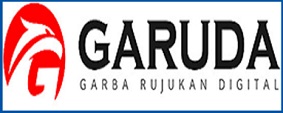Enhancing children’s interest in learning through loose parts media
DOI:
https://doi.org/10.26555/jecce.v6i1.6342Keywords:
children's interests, early childhood, loose parts mediaAbstract
To deal with early childhood’s interest in learning as a psychological aspect of a person, early childhood education (ECE) teachers should employ varied media. Learning interest is related to enthusiasm and willingness to participate in learning activities. Kuntum Mekar is an ECE unit that became a subject in this study. Their vision is to create a generation of intelligent, creative, and independent individuals; however, they face challenges in children's interest in learning activities. So, the aim of this study was to enhance the learning interest through loose parts media to increase the opportunity for stimulating all of the children's developmental aspects. This research involved 10 children aged 5–6 years and was conducted using the classroom action research (CAR) method. Two cycles are employed, including four steps: planning, acting, observing, and reflecting. Data collection techniques include observation, interviews, and documentation. The achievement of indicators for the development of children's interest in learning through loose parts media has been successful, as expected, with a 90% achievement indicator of class. The priority of increasing children's interest in learning is essentially developing the ability of all aspects that exist in the child optimally, and loose parts media have been proven to do that. Therefore, loose parts media are recommended for early childhood teachers for enhancing children’s interest in learning.
References
Direktorat PAUD. (2011). Peraturan Menteri Pendidikan Nasional Tentang Standar Pendidikan Anak Usia Dini. Jakarta: Kemendiknas.
Anas Sudijono. (2010). Pengantar Statistik Pendidikan (2010th ed.). PT. Raja Grafindo Persada.
Djamarah, S. B. (2011). Psikologi Belajar. Rineka Cipta.
Dr. Yuliati, Siantajani, M. P. (2021). Loose Part (S. D. Endinda,H.Krista (ed.); 3rd ed.). Sarang Seratus Aksara.
Haughey, S. (2017). Fairy Dust Teaching.
Holland. (1997). Making vocational choices: A theory of vocational personalities and work environments, 3rd ed. - PsycNET. https://psycnet.apa.org/record/1997-08980-000
Hurlock, E. (2017). Perkembangan Anak (6th ed.). Erlangga.
KBBI. (n.d.). Kamus Besar Bahasa Indonesia. Retrieved June 2, 2022, from https://kbbi.web.id/belajar
Lisa P. Kuh, Iris Ponte, & Clement Chau. (2013). The Impact of a Natural Playscape Installation on Young Children’s Play Behaviors. Children, Youth and Environments, 23(2), 49. https://doi.org/10.7721/CHILYOUTENVI.23.2.0049
Maghfiroh, S. (2020). Media Pembelajaran Untuk Anak Usia Dini di Pendidikan Anak Usia Dini | Jurnal Pendidikan Tambusai. Jurnal Pendidikan Tambusai. https://jptam.org/index.php/jptam/article/view/1086
Nisa, A., & Renata, D. (2018). Analisis Minat Belajar Siswa dan Implikasinya Terhadap Layanan Bimbingan dan Konseling. KONSELI : Jurnal Bimbingan Dan Konseling (E-Journal), 5(2), 119–130. https://doi.org/10.24042/KONS.V5I2.3058
Nurdin, N. (2022). Pengaruh Penggunaan Video Pembelajaran terhadap Minat Belajar Siswa pada Materi Mendongeng di Masa Pandemi Covid 19. Murhum : Jurnal Pendidikan Anak Usia Dini, 43–52. https://doi.org/10.37985/MURHUM.V3I1.75
Pendidikan & Kebudayaan. (2014). Buku Panduan Guru TK Kurikulum 2013 PAUD Usia 5-6. https://www.paud.id/buku-panduan-pendidik-k13-paud-usia-5-6-tahun
Rikariyani. (2021). https://www.rikaariyani.com/2021/11/pengertian-media-pembelajaran.html.
Siskawati, S., & Herawati, H. (2021). Efektivitas Media Loose Parts di PAUD Kelompok A Pada Masa Belajar Dari Rumah. Jurnal Pendidikan Luar Sekolah, 15(1), 41–47. https://doi.org/10.32832/JPLS.V15I1.4629
Safari. (2003). Indikator Minat Belajar. Rineka Cipta.
Slameto. (2003). Belajar dan Faktor-Faktor yang Mempengaruhinya (Iv). Rineka Cipta.
Suyadi, & Ulfah, M. (2017). Konsep Dasar PAUD (N. N. Muliawati (ed.); Keenam). Remaja Rosdakarya Offset.
Talizaro. (2018). PERANAN MEDIA PEMBELAJARAN DALAM MENINGKATKAN MINAT BELAJAR MAHASISWA | Tafonao | Jurnal Komunikasi Pendidikan. http://journal.univetbantara.ac.id/index.php/komdik/article/view/113/101
Ubaidilah. (2019). PENGEMBANGAN MINAT BELAJAR KOGNITIF PADA ANAK USIA DINI | Ubaidillah | JCE (Journal of Childhood Education). JCE (Journal of Childhood Education). https://doi.org/2620-3278 (E-ISSN), 2598-2184 (P-ISSN)
Downloads
Published
How to Cite
Issue
Section
License
Copyright (c) 2023 Rondiyah Kartini, Lia Kurniawaty

This work is licensed under a Creative Commons Attribution-ShareAlike 4.0 International License.
Authors who publish with this journal agree to the following terms:
- Authors retain copyright and grant the journal right of first publication with the work simultaneously licensed under a Creative Commons Attribution-ShareAlike 4.0 International License that allows others to share the work with an acknowledgement of the works authorship and initial publication in this journal.
- Authors are able to enter into separate, additional contractual arrangements for the non-exclusive distribution of the journals published version of the work (e.g., post it to an institutional repository or publish it in a book), with an acknowledgement of its initial publication in this journal.
- Authors are permitted and encouraged to post their work online (e.g., in institutional repositories or on their website) prior to and during the submission process, as it can lead to productive exchanges, as well as earlier and greater citation of published work (See The Effect of Open Access).











